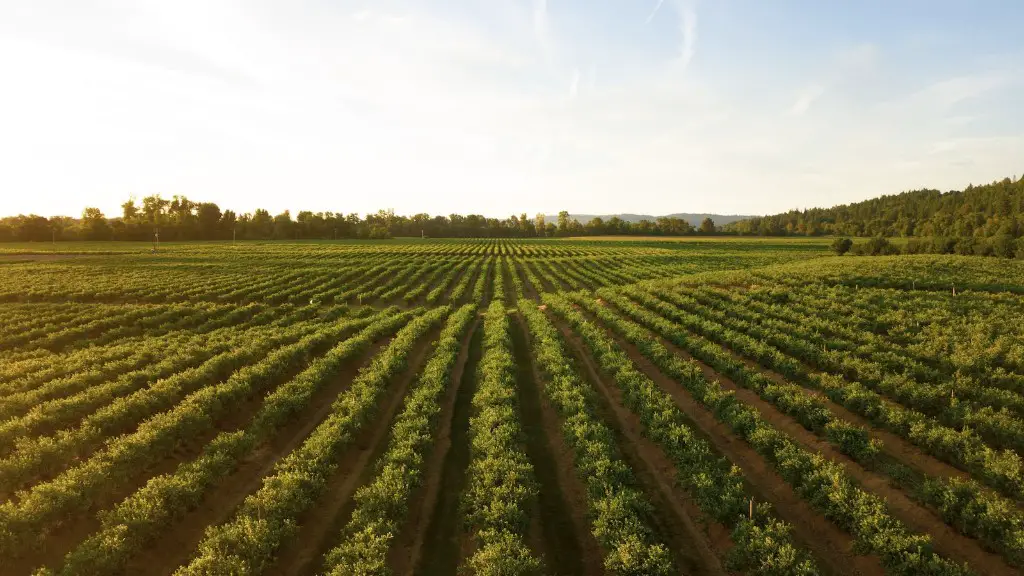Today’s youth are increasingly shaping society by becoming actively involved in civic and political life, as well as in the entrepreneurial economy. On the other hand, agriculture – and rural development in general – have stayed behind in terms of attention, investment, and perceived roles for the youth. But this is an inaccurate perception. Youth are an invaluable asset in the agricultural sector, both in terms of present contributions, such as providing labor and technology, as well as for the future, for the sustenance of farming in the future. Here, we will discuss the role youth have in agriculture and the strategies to increase their participation.
To begin with, youth are a valuable source of labor in agricultural activities. Young people, although sometimes driven by necessity, are often willing to work in the sector because they offer access to new experiences and opportunities, in comparison to working in a traditional job. Furthermore, urban youth are key to small and medium-sized farms, due to their ability to access digital tools, use modern agricultural techniques, and create infrastructure for small-scale production. Such commercial farming is often a great form of income for the entire community and could incentivize others to enter the sector.
At the same time, the addition of technology to agricultural processes is another way in which the young generation can contribute to the sector. Modern farming techniques, such as precision planting, remote sensing, and smart irrigation, must be supported by technological expertise. Youth are an ideal target demographic for such projects, with their ability to learn technical skills quickly and off-farm innovation enterprises presenting an opportunity to shift agriculture into a more data-driven, entrepreneurial sector. By equipping youth with the new technical abilities they require, they open the door to develop low-cost and low-input solutions to agricultural problems, while simultaneously providing them with the opportunity to earn reputable and high-income positions in the sector.
It is therefore clear that the potential to drive change and innovation in the sector is offered through youth involvement in agriculture, something that could benefit both parties. Agricultural communities often struggle to stay afloat and it is the responsibility of the government and related institutions to support these communities and increase the engagement of youths in agriculture. Here are some strategies to encourage more young people to join the agricultural sector.
One of the strategies is providing subsidized education in agricultural programs for young people. This would both incentivize students to join agricultural schools, as well as use their education to be future innovators in the sector. Similarly, providing access to micro-loans or other forms of capital could ensure their participation in existing agricultural projects and provide them with the necessary funds to start their own. In addition, providing access to research and development funds, or grants, could aid existing projects where they are needed while providing a stimulating environment to innovate in.
Finally, investing in public-private partnerships could bring together the resources of both sectors, with access to larger pools of capital or direct technological support. These initiatives could allow youth to join the sector without the need for large financial investments, as well as provide faster and more reliable access to resources. Through such measures, youth can be both interested in and dedicated to their profession, as well as increase their potential to make a significant impact in the agricultural sector.
Enhancing Education Qualifications in Agriculture
An additional strategy that could spur youth into the agricultural sector is enhancing their education qualifications in the field. This includes significantly investing in agricultural-based schools, or those that focus on agro-ecology, agronomy, and similar sciences. This would make sure the youth are prepared for the job and given the opportunity to lead the sector in the future. Furthermore, teaching about rural living could be beneficial for students, as it would give them an understanding of the struggles that these communities face and encourage them to enter the sector and help modernize it.
At the same time, encouraging collaboration between agricultural schools, rural communities, and universities should also be considered. Through such measures, students would have the opportunity to gain experiential learning in rural areas and take part in projects designed by the community. Working on these initiatives will give students a better sense of the importance of these enterprises and the technical skills required to activate them.
Collaboration with the private sector is another way to enhance the youth’s education qualifications. Through such partnerships, they could gain access to the latest technology and gain knowledge on modern agricultural techniques, such as precision farming or advanced irrigation systems. This brings us back to the notion of creating public-private partnerships that could stimulate the sector, something that could be beneficial for rural communities in the long run.
All of the above strategies could serve as a bridge between the rural-urban divide and could reduce the existing disconnect between these two areas. On the other hand, investing in research, infrastructure, and technology programs could help rural enterprises become more efficient, something that would ultimately benefit the entire sector.
Government Support
When it comes to government support for the youth in the agricultural sector, this could take multiple forms. One could be providing a safety net for students entering the sector, so that their income, for the first few months, is available to them. This could allow young people to feel comfortable in entering the sector, as well as make sure that the sector can retain its qualified talent, something that is currently rather scarce.
At the same time, the government could engage in discussions with the stakeholders of the sector, such as the farmers and entrepreneurs, to create initiatives that provide advantages for the youth. Such collaborations may provide access to internships, even if they are without pay, that can be the stepping stones to securing a job in the sector. This could encourage more young people to join and gain experience, something that could benefit the long-term prospects of the sector.
Furthermore, the government could also create agricultural vocational training centers, so that rural youth can start gaining the necessary skills for the sector. On the other hand, an intelligent strategy would be investing in educational materials, such as textbooks and computer programs, which are designed to educate people about the sector and provide them with the skills needed for a job. All these initiatives could both educate the youth about the sector and provide them with a platform on which to excel.
Finally, the government could create a “Youth in Agriculture” program, which focuses on innovation and technology in agricultural processes. This could bridge the gap between traditional farming and modern technological solutions, thus making way for a more efficient, entrepreneurial sector. Through such initiatives, the rural youth would have access to the latest know-how, as well as the incentive to push the boundaries of agricultural development.
Business Opportunities
Apart from the government, the private sector also has a crucial role to play in promoting youth in the agricultural sector. Special programs – such as dedicated internship schemes – could allow young people to engage in agribusiness and acquire the necessary skills to perform well in the sector. These initiatives could create new job opportunities and give young people a chance to gain the experience they need to lead the sector in the future.
At the same time, high-end technology and research programs at universities, as well as the start-up environment, could also create a richer environment for the agricultural sector. Through such partnerships, young entrepreneurs from rural areas could create underfunded projects, but with the potential to generate large profits, something that could work as an incentive for the sector. This could reduce the traditional disassociation from agriculture and incentivize youth to join.
On the other hand, businesses should also be encouraged to explore opportunities for investment in rural areas. This could be done through government-supported programs and grants, which could bring together the resources of the private and public sectors in order to create sustainable and profitable projects. Such initiatives could create job opportunities and attract more young people to the sector while also creating new sources of income.
In conclusion, the potential of the youth in the agricultural sector is immense. By investing in their education and creating business and employment opportunities, more young people will be attracted to join and create great impact in the sector. by implementing the previously mentioned strategies, the government can foster a more prosperous environment for the youth and the sector.




